THEATRICAL PLAYS
- Memories and dreams
- Green…Blue…Blue…Green
- Bald warrior
- The latest crop tape
- Station
- MUMMY
- dance with me
She could neither read nor write…
But she was saying something that she had neither read nor had anyone written.
Abbas Kiarostami describes her this way.
Her name was Mukarmeh. She was a genius Iranian painter. Who was born in 1928 in Darikandeh village of Babol (my city).
Her inner excitement to create pictures since her childhood was revealed in the form of playing with mud and dirt, but she did not express her feelings through painting until she was 67 years old!
Mukarmeh, like many Iranian women, was a relative of a child wife. When she was only 15 years old, she was forced to marry the old man of the village. But she never gave up art and showed her artistic desire through other artistic works such as the makeup of village brides.
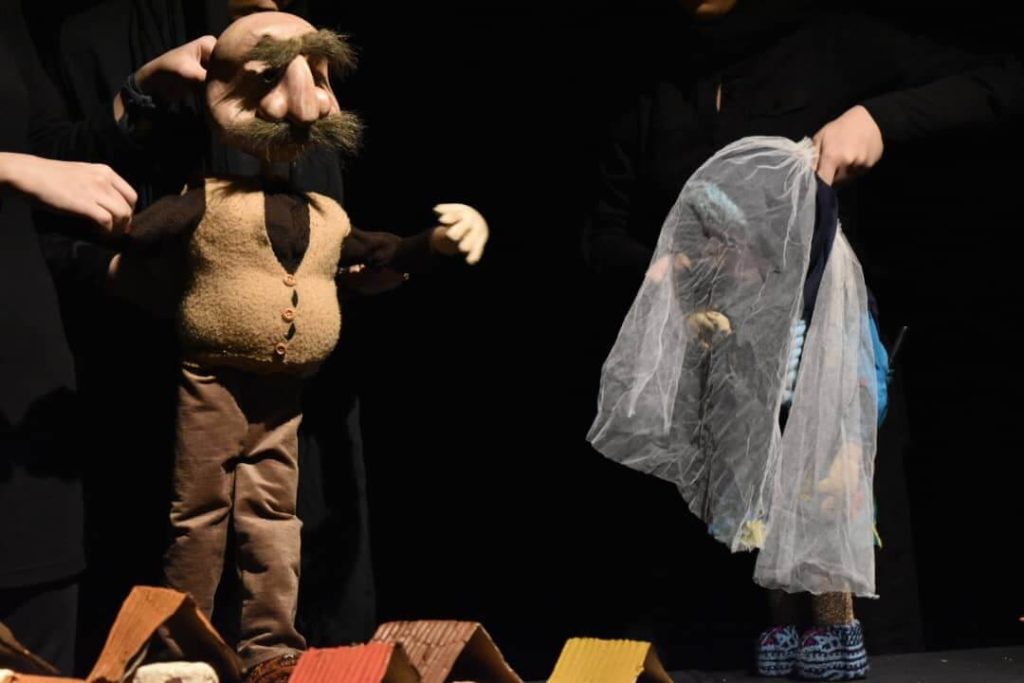
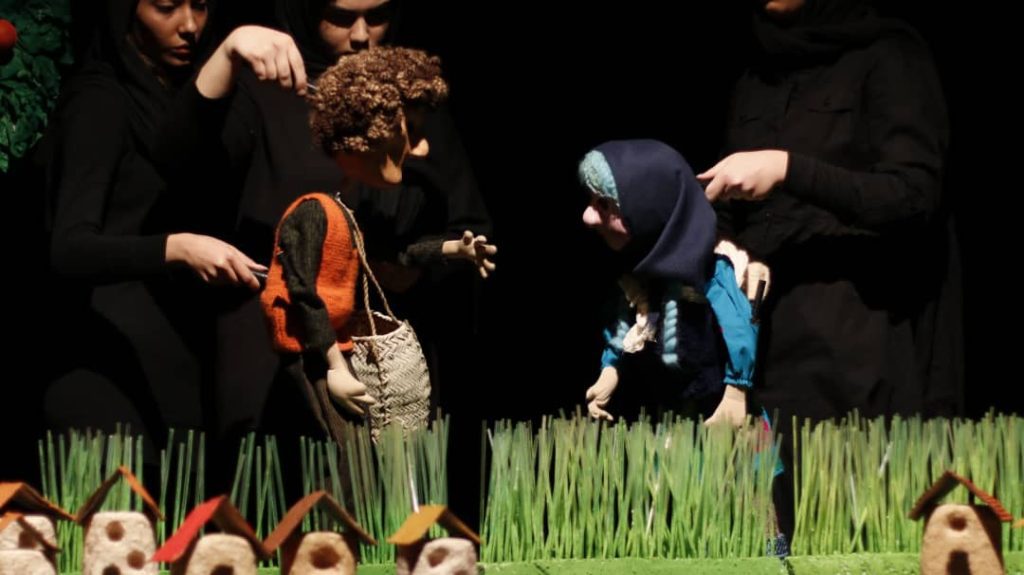
Painting started from the disease of her favorite cow. She had a beloved cow that she had to walk a long distance to graze. After some time, Mukarmeh fell ill and her children, who were worried about their mother’s health, sold the cow without her prior knowledge. After that time, Mukarmah became very sad and took refuge in painting to overcome her feelings. Not even able to read or write, she started painting without any formal training.
Mukarmeh painted her first work, which was a portrait of a cow, with mud and dirt on stone. Then she painted all the walls of the house, doors, gourds and everything that could serve as a canvas, until one of her sons bought paint and paper for her during one of his monthly trips to visit his mother.
Now her whole house is full of paintings, each of which is the narrator of the bitter and sweet story of her life, especially the story of her marriage!
The first exhibition of Mukarmeh was held in 1996 in Sihon Gallery, and after that she held exhibitions in the same gallery every year. Also, in 2006, an exhibition of her works was held in Los Angeles. Mrs. Ghanbari went to Sweden in 2001 to set up an exhibition of her works and was chosen as Sweden’s Woman of the Year that same year. European art experts compare her works with Chagall’s paintings.
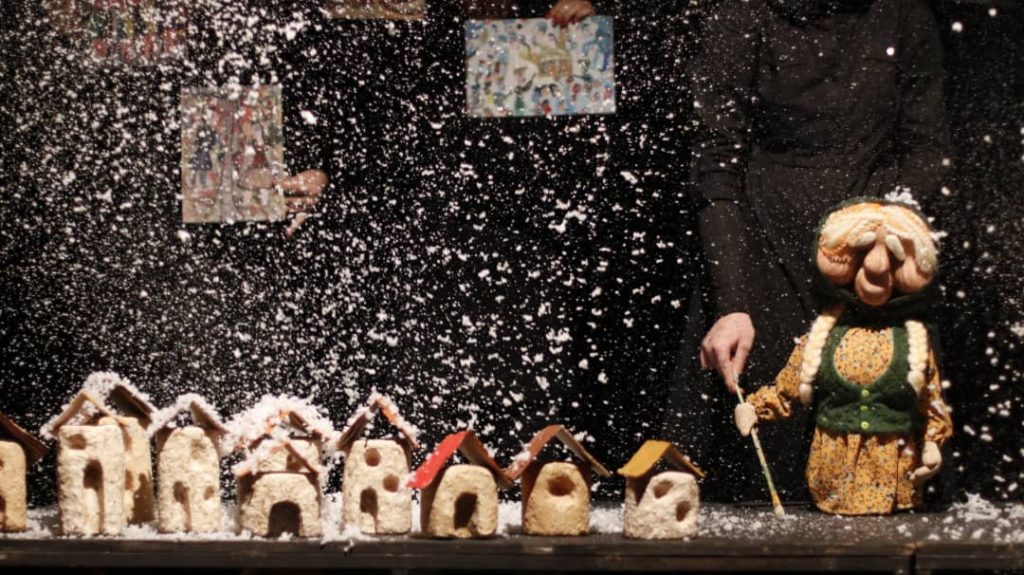
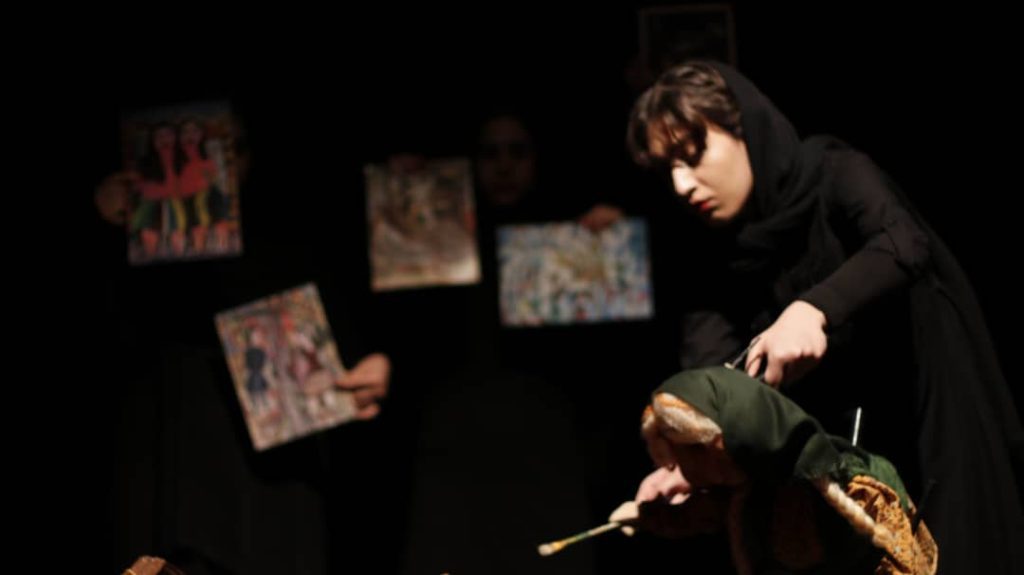
Mukarmeh was my fellow citizen. Like her, my art was buried under male tyranny for years, and like her, it came out from deep within me and finally blossomed. This sharing inspired me to recreate the story of this magnificent artist in the form of a dream. The stages of making the puppets and collecting documents related to Makrameh’s life started in September 2016 and finally the show (memories and dreams) based on Makrameh Ghanbari’s biography on 02/13/2018 as a practical project of my bachelor’s thesis in the samandarian hall The fine arts of Tehran University were performed.
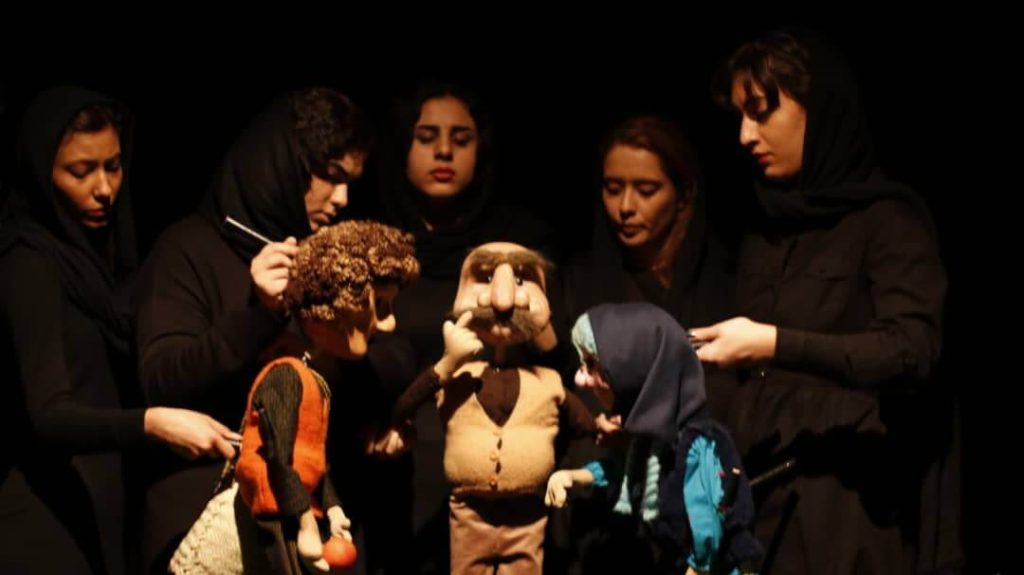
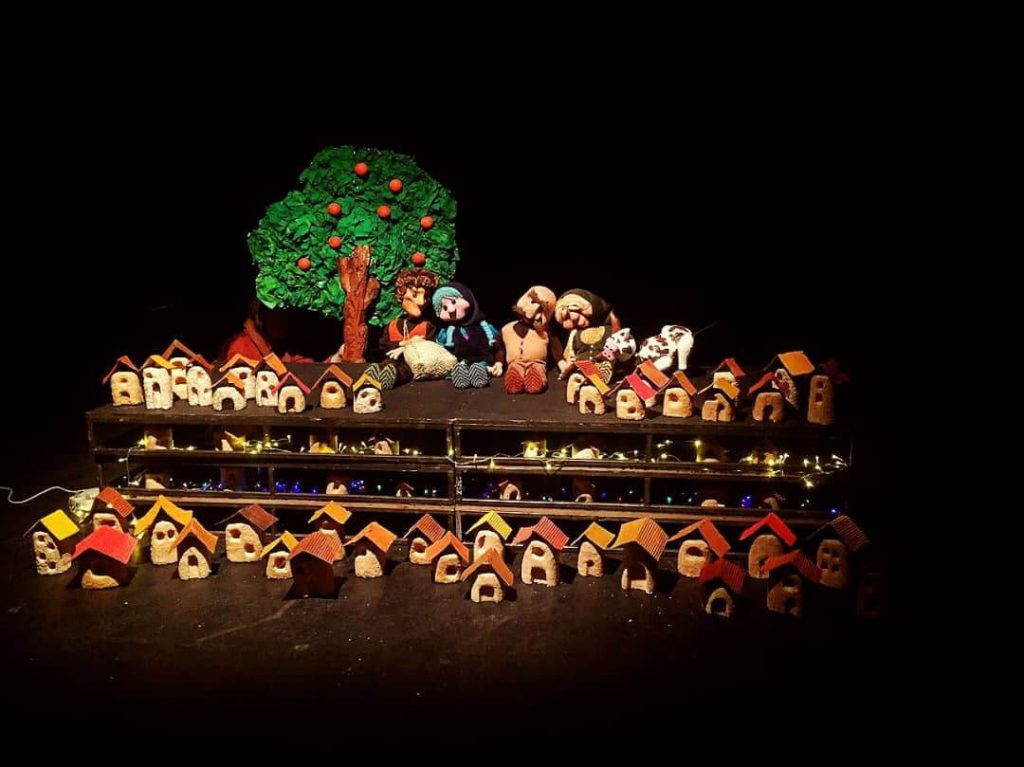
The purpose of this show was to represent the rituals, especially the rainmaking ritual in the puppet theater. In pursuit of this goal, the director as an artist did not try to take exactly the same rain-seeking ceremonies, and in fact, by adapting these ceremonies, she achieved a modern performance idea.
Considering that the director lives in the age of technology and in her mental world the rituals of asking for rain sometimes seemed surprising and sometimes funny, what attracted her more than anything in the rituals of asking for rain was a real expectation. That ancient people used to draw rain after performing this ceremony. An expectation that followed a hope. Drought, which was the main cause of this ceremony, made her think of a world without water and grass with a single dry tree as the world of the show, and the word waiting with the single tree led her to the world of the show waiting for Godou. It is as if DiDi and GoGo are the representatives of all human beings and they are wandering in an unknown world and maybe in the future where the environment is destroyed and only one factor causes their life to continue and that is hope. Hope was the last element left in Pandora’s Box. The hope that sometimes goes to the right and sometimes to the wrong in the heart of a person and makes her continue to live in the depths of problems. DiDi and GoGo in the director’s show world, their only hope is a single tree that will bring them pomegranates. They perform ceremonies while waiting for Anahita, and finally Anahita gives them Pandora’s Box and warns that in exchange for keeping the promise and not opening the box, she will fill their tree with pomegranates. Since the human being is drawn towards it the more it is forbidden, both of them get itchy due to the intensity of their curiosity and finally decide to open the box.
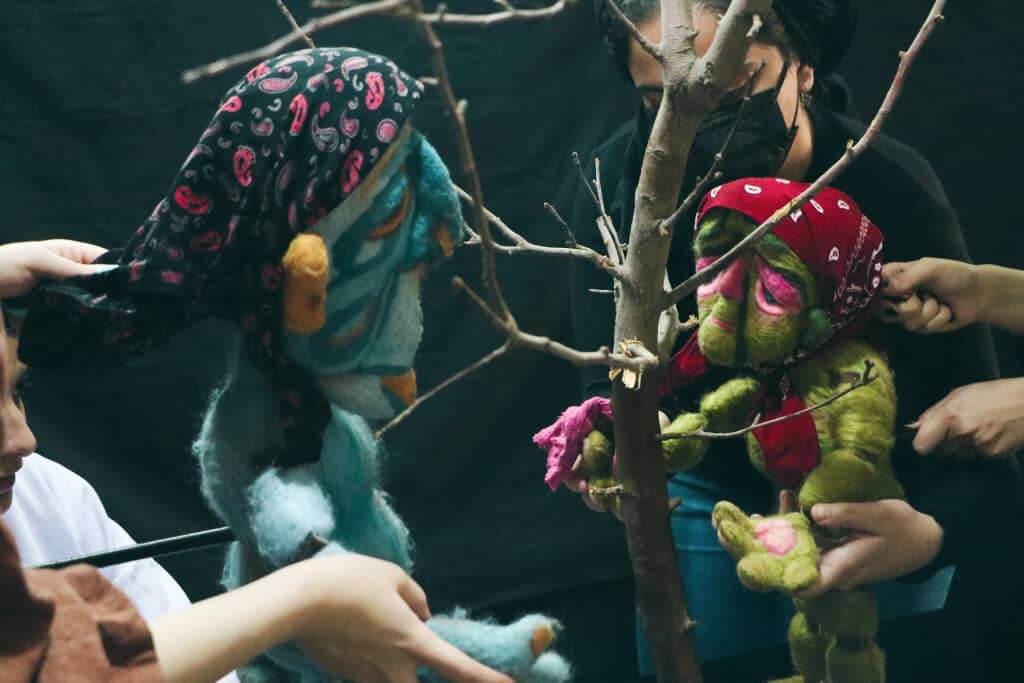
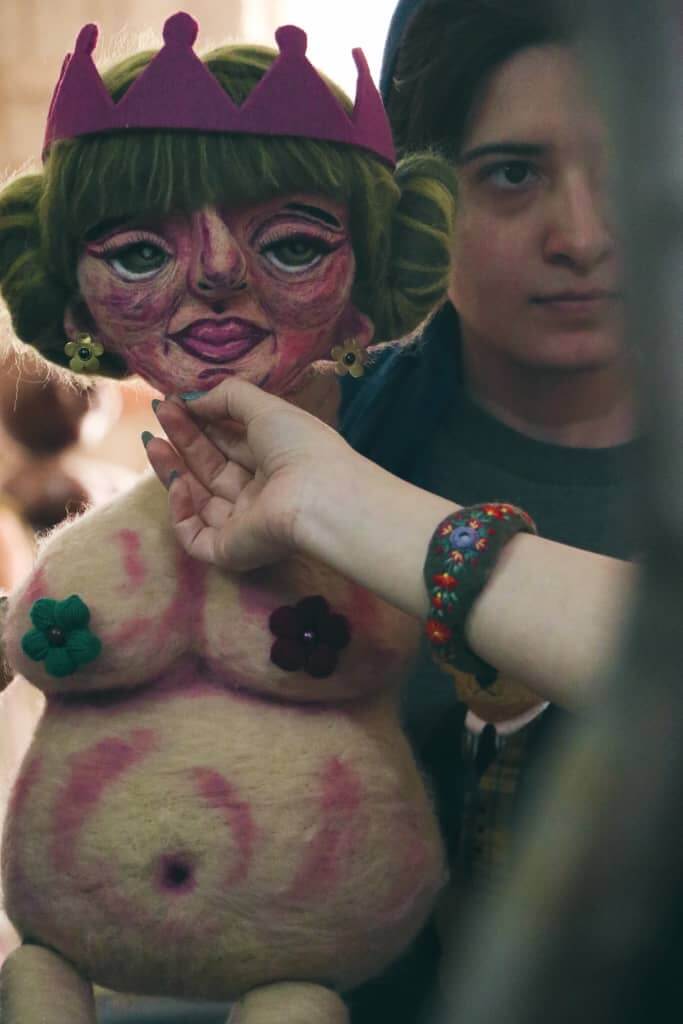
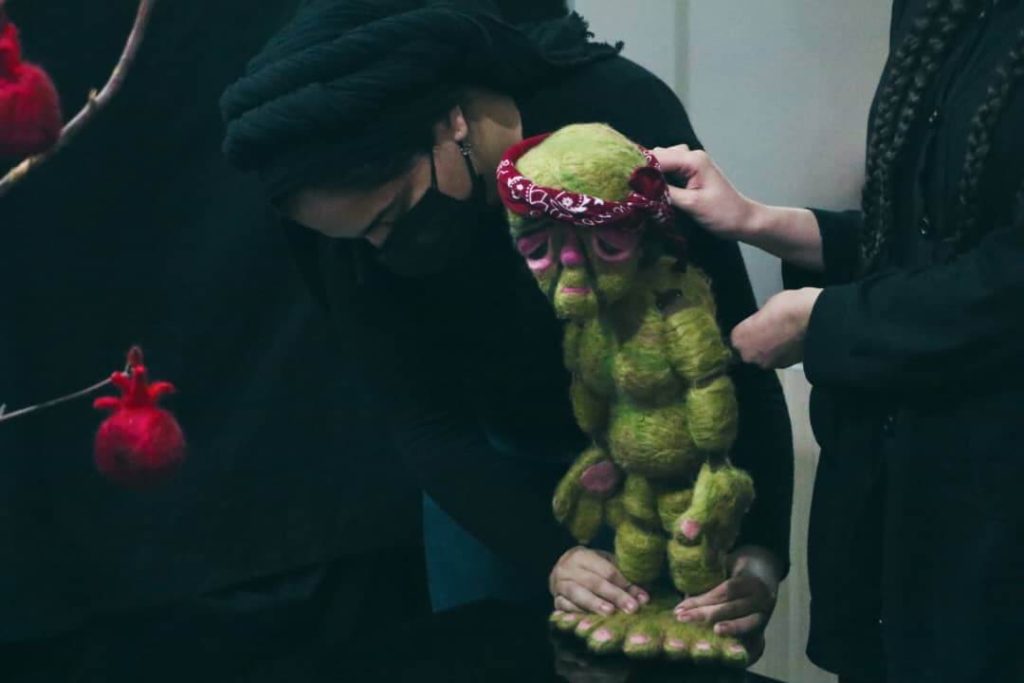
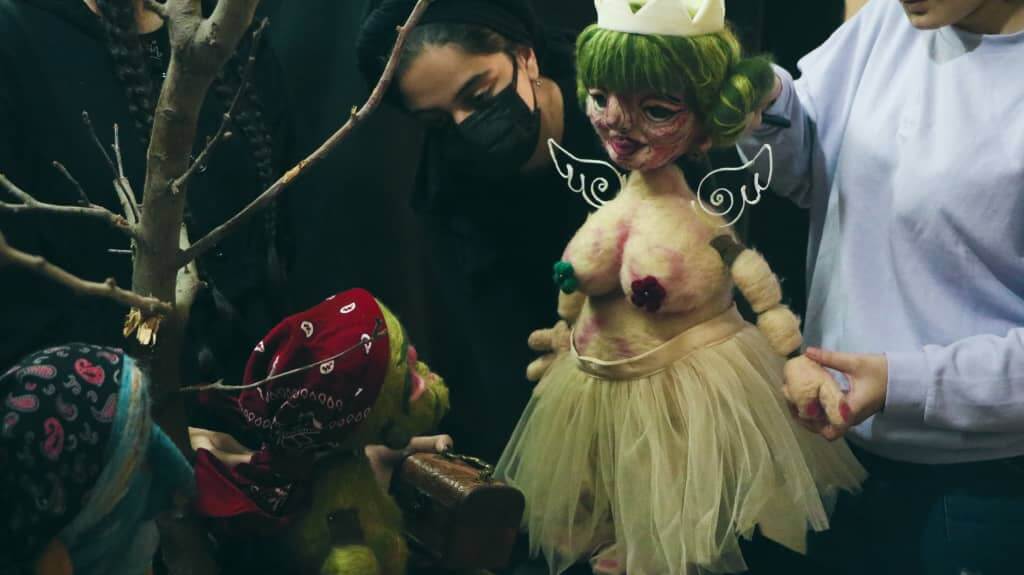
Breaking a promise is equivalent to pomegranates falling from a tree, and at the height of despair, it is hope that comes out of Pandora’s Box and a single pomegranate grows on the tree.
This show consists of five scenes:
In the first scene, we see the boredom of DiDi and GoGo because of the drought and the lack of fertility of the tree.
In the second scene, GoGo is trying to encourage the tree to bear fruit by stroking it. DiDi who is wiser, suggests to him that instead of doing these vain things, they should perform rain rituals and those two spoons of clay and rain bouquet. Are implemented symbolically.
In the third scene, we once again see their disappointment with the fertility of the tree after performing the rain ceremony, when Anahita suddenly enters with Pandora’s Box and promises to fill the tree with pomegranates on the condition of keeping their promise and not opening the box. Which is one of its manifestations.
In the fourth scene, the tree is full of pomegranates, but the temptation to open the box takes over GoGo’s whole being, DiDi tries to stop him from this decision, but he realizes that he is also extremely curious and from the intensity of the curiosity of their bodies It itches.
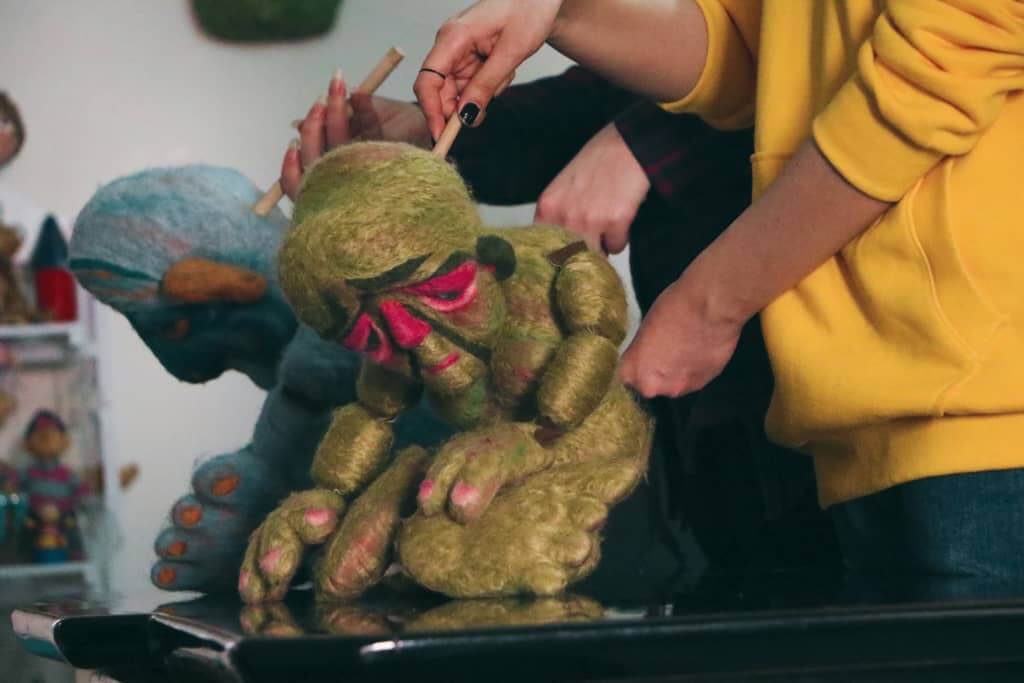

In the fifth and last scene, we see GoGo’s insistence to open the box. At first, DiDi busy himself with pomegranates, but finally he can’t control his breath and they open the box. Opening the box equals the two breaking their vows with Anahita and the pomegranates fall one by one from the tree. Those two are once again in their waterless and grassy world, alone and in complete despair, but at the end of Pandora’s Box, there was one thing left, hope, the hope that appears in the form of pomegranate regrowth on the tree and evokes this concept. Slow that life goes on even in the worst conditions.
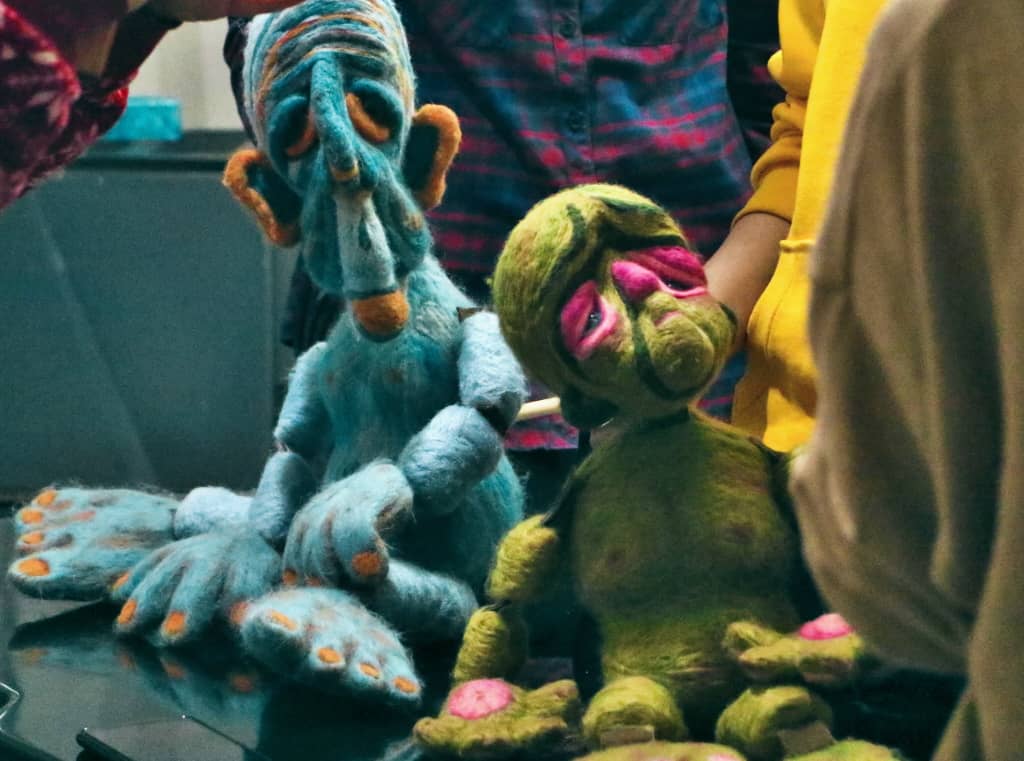
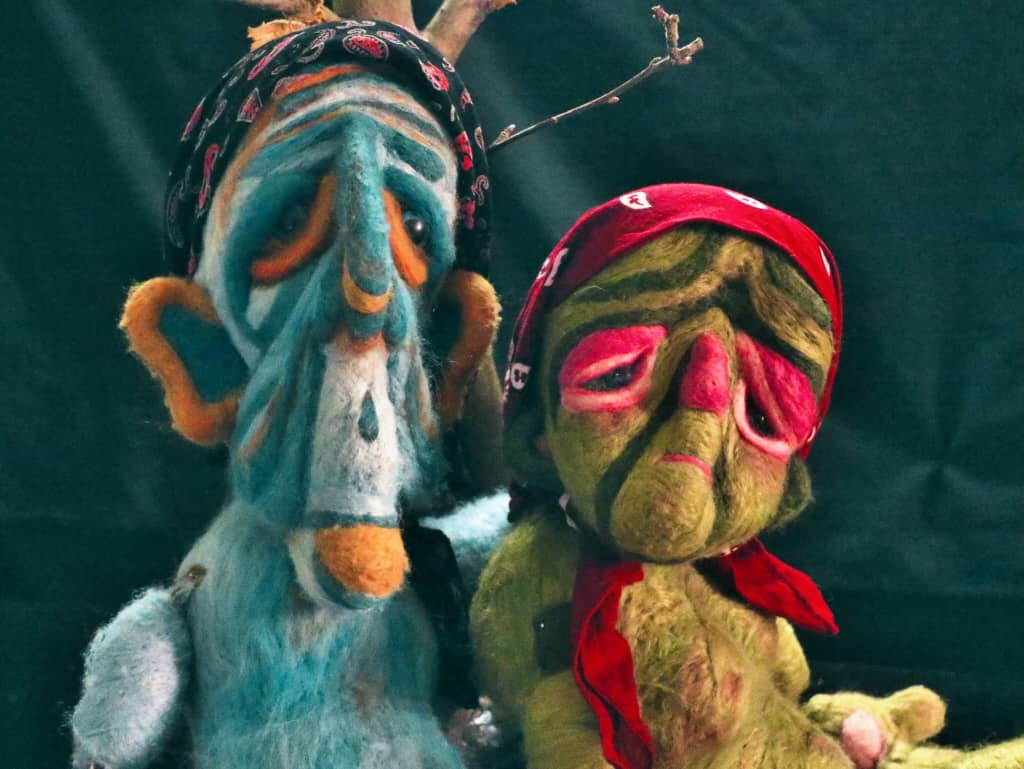
Tent playing was one of the entertainments that became popular in Iran at the end of the Qajar period and quickly became the favorite entertainment of the people. The marquee show was performed in a cloth room by a person called the marquee so as not to be seen. With a stick in his hand, the tent mover used to make the cotton dolls or hand puppets in the tent speak and sing with the story he had in mind. The marquee was originally a comedy and critical show that was held in noble houses and in special events such as weddings, birthdays and celebrations.
Bald warrior was one of the most famous shows that was performed as a marquee. The story was that bald warrior was in love with a girl named Serovnaz, but her father did not approve of this relationship. They end up getting married through Mubarak’s mediation, but in the course of the story, the devil steals their child and they all search for the lost child. The marquee always ended with a party and a dance.
We had a rope to save each other, as strong as kindness, as thick as empathy and as long as intelligence we occasionally and without being aware of what we are doing; we saved each other. We didn’t know that a small kindness has a profound effect on people’s lives, we didn’t know that sometimes a simple smile saves a person, we didn’t know that sometimes a praise, a gratitude, a hug and a sympathy, what color sprinkles in the black and white world of people and we smiled and showed kindness and praised and were grateful and hugged and became the lifeguards who saved, without having drowned People were struggling in a corner of their world, surrounded by inevitable problems and pains.
It was enough to be a little more kind to pull them out of the deepest oceans of sorrow.
The truth has different colors depending on people’s understanding, like blue that becomes the color of a cup.
Among all living beings, the only one who is also the creator is woman. Between Adam and Eve, it is Eve who can create like her creator and do divine work.
Woman is God’s association on earth. A creature that can be seen is a symbol of a creator that cannot be seen.
The womb is a branch of God, the Merciful, and the woman is one of God’s close ones. A woman is the goddess of creation and birth, and the value of a woman is appreciated by the one who is aware of her.
Mother’s arms are God’s arms. No hug is as loving and hopeful as this.
The mother is the closest creature to the Creator, and for this reason, the unraveling of affairs returns to the mother.
Knowledge that is not diverse cannot be trusted, and any place and truth that does not have femininity has no validity.
Commemorating she creation is commemorating her.
Women are the soul of this land.
Suffering should not make you sad
This is the part of life where most people go wrong
Suffering is supposed to make you more aware that your life needs to change
Because people become more alert when they are wounded
Suffering should not increase misery
Don’t just bear your pain
Understand your pain
This is an opportunity to wake up!
The story of the mummy is taken from the book The Tragic Death of the Oyster Boy written by Tim Burton. Tim Burton always felt comfortable with people who were different because he always felt different himself and because no one ever understood him, he was close to people who were in the same situation; that is, these different people that no one understands! He says: “We are looking for things that we don’t have. In this work, Burton brought to life a group of strange children who are rejected from society because of their unusual appearance and cannot experience the feeling of love and belonging in this cruel world. He creates awesome and lovable children; lonely outcasts trying to find love and belong in their cruel and oppressive worlds. His illustrations show the happiness and tragedy of these hopeful but unhappy creatures at the same time.
Creatures that remain hopeful but cursed heroes seem to represent a part of us all.
One thing
A thin and thin intermolecular thing
It connects us in the four corners of the world
A hidden gene from the mother of dance
A forbidden rhythm
A sad place
We dance because of a lot of sadness
What does life have but sorrow and dance?
